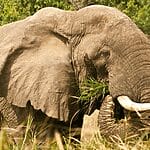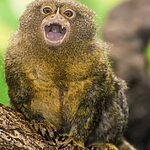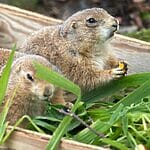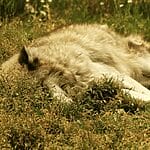When we think of animals, we often picture them on the ground or in the water, but many species have mastered the art of climbing trees. These creatures have developed unique skills to survive in the treetops, avoiding ground-based predators and finding food where others can’t reach.
One challenge these animals face is adapting their bodies to grip branches, leap between trees, or balance on narrow limbs. It’s not an easy task, yet animals like monkeys, squirrels, and even some reptiles do it daily.
In this article, we’ll take a closer look at the fascinating world of tree-climbing animals, exploring how they’ve evolved to thrive above the ground. You’ll discover the incredible ways they use their abilities to survive and stay out of harm’s way.
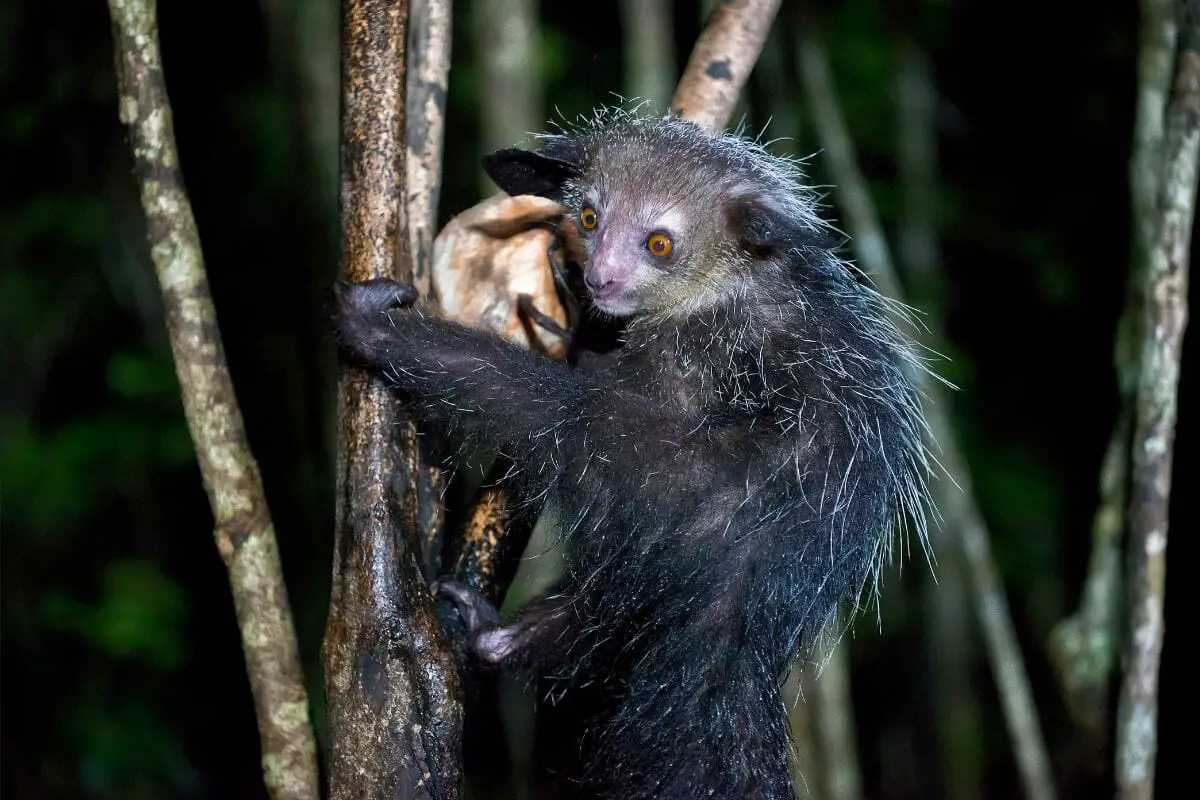
List of Animals That Climb Trees
Aye-Aye
First on our list is the aye-aye! Aye-ayes are mammals that eat both plants and creatures, and you can typically find them in Madagascar (Also check out Animals In Madagascar).
Aye-ayes are the largest nocturnal primate in the world. They have characteristic bat-like ears, and their eyes are situated deep into their sockets.
Aye-ayes actually climb trees to find food, showcasing their unique adaptations for foraging. They have long middle fingers that can help them grip nuts hidden under the bark, aiding their foraging efforts.
Not only that, but when they use both hands they are able to tear away tree bark and eat the bugs behind it.
Gorilla
Gorillas are mammals that can be naturally found in equatorial Africa. They are herbivores who primarily enjoy fruit and leaves, similar to other arboreal animals in the animal kingdom.
Naturally, gorillas are ground animals and will spend a lot of time on land.
However, they love to climb trees to search for food and have been observed to spend a lot of time amongst the branches.
Grizzly Bear
Grizzly bears are another type of mammal that are excellent at climbing trees. They are omnivores that primarily live in Asia, North America, and Europe.
Grizzly bears can climb trees as high as 20 ft, and will often do so for numerous reasons. Grizzly bears like to climb trees to find food, escape danger, or rest.
Fox
Foxes are mammals that can be found all over the world. They are omnivores who like to eat fish, insects, eggs, and birds.
Foxes are extremely agile creatures and they can climb trees with ease thanks to their powerful hind legs and semi-retractable claws.
These sharp claws provide them with excellent balance to climb the tree with success. Foxes climb trees to hunt for food, and will often snatch their food, such as birds and eggs, from nests high in the branches.
Dingo
Dingos are mammals that can be found in Australia! They are carnivores that feed off birds, rabbits, rodents, and lizards.
Dingos can climb trees thanks to their muscular hind legs and sharp claws. Their tails help them to balance while climbing so they can do it with ease.
Not only that, but dingos also have flexible spines that allow them to maneuver the tight spaces of a tree.
Therefore, they can climb steep slopes without much trouble. Dingos climb trees to hide away from predators.
Chimpanzee
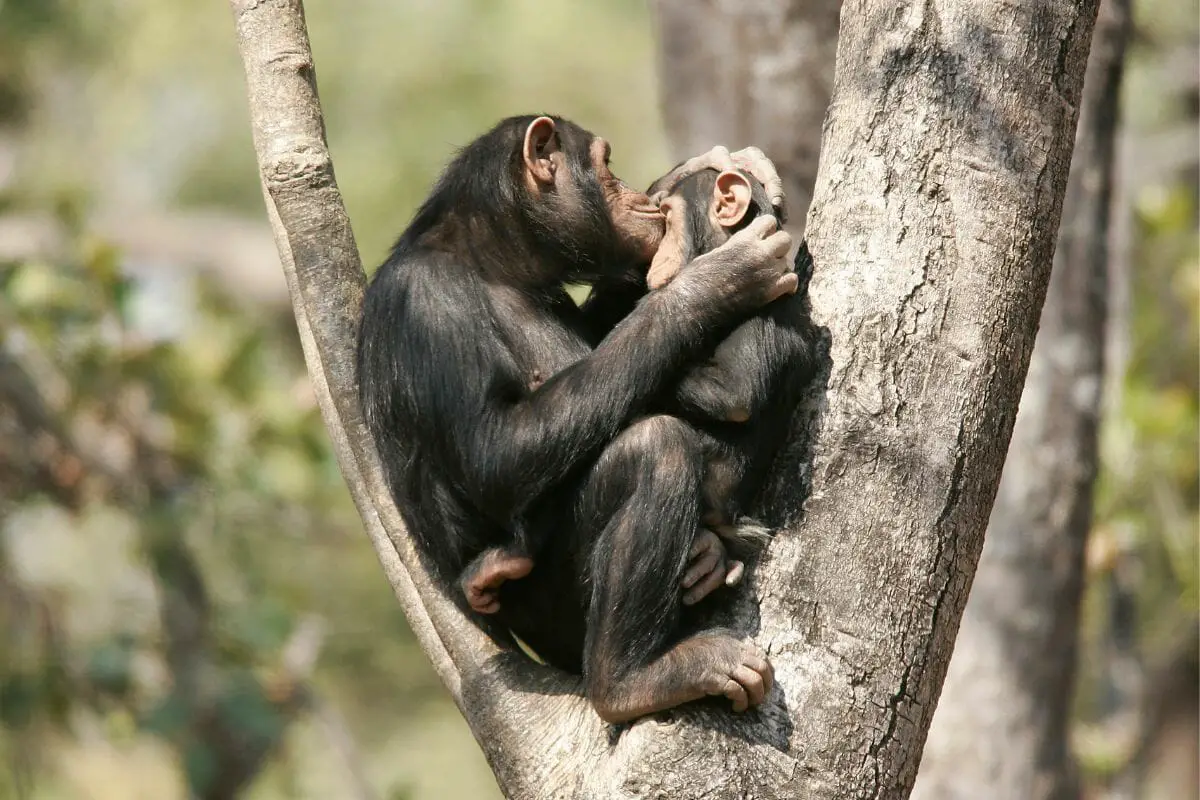
Chimpanzees are mammals hailing from both central and west Africa. They are omnivores that love to eat insects, blossoms, bark, leaves, seeds, and many different types of fruit!
Chimpanzees are actually very closely related to humans, we share around 98% of our DNA with them!
Chimpanzees will actually climb trees to find fruit to eat later in the day, showcasing their impressive climbing skills. They also like to use the trees as a vantage point to look out for predators.
Koala Bear
Koala bears are arboreal animals that can be found in Eastern Australia, often resting in eucalyptus trees. They are herbivores and so will exclusively eat plants, such as eucalyptus leaves.
Koala bears will climb trees to have a place to rest. Generally, they will sleep for around 18 hours a day, so they like to stay high to be safe.
Koalas are very adept at climbing trees because they have strong claws and arms which means they can grip tree branches very well. From here, they can climb with ease.
Lizard
Lizards are a type of reptile that can be found all over the world. They are omnivores, and their diet mostly consists of live insects, eggs, and a wide variety of plants and fruit.
Lizards climb trees by using their spiky toes and claws to get a good grip on the bark. Then, they will move up the tree trunk using the muscles in their tails.
In addition to this, many lizards are actually arboreal, which means they will mostly live in trees, or at least spend a lot of time in them.
Langur
Langurs are mammals that hail from western Assam, India.
Langurs are herbivores that mostly eat leaves, but they have been known to eat whatever flowers or fruit are in season.
The food that langurs eat is not as high in nutritional value, especially when compared to the diets of other types of monkeys that help them climb better.
As a result, langurs are not as active as other types of monkeys.
However, they are considered to be some of the best tree climbers that exist today.
Langurs can jump between branches of very high trees and suspend themselves upside down from them. They use their tails to balance in the trees as they move.
Langurs will hang themselves upside down from trees whenever predators are close by to make it more difficult for the predator to get them.
Panda
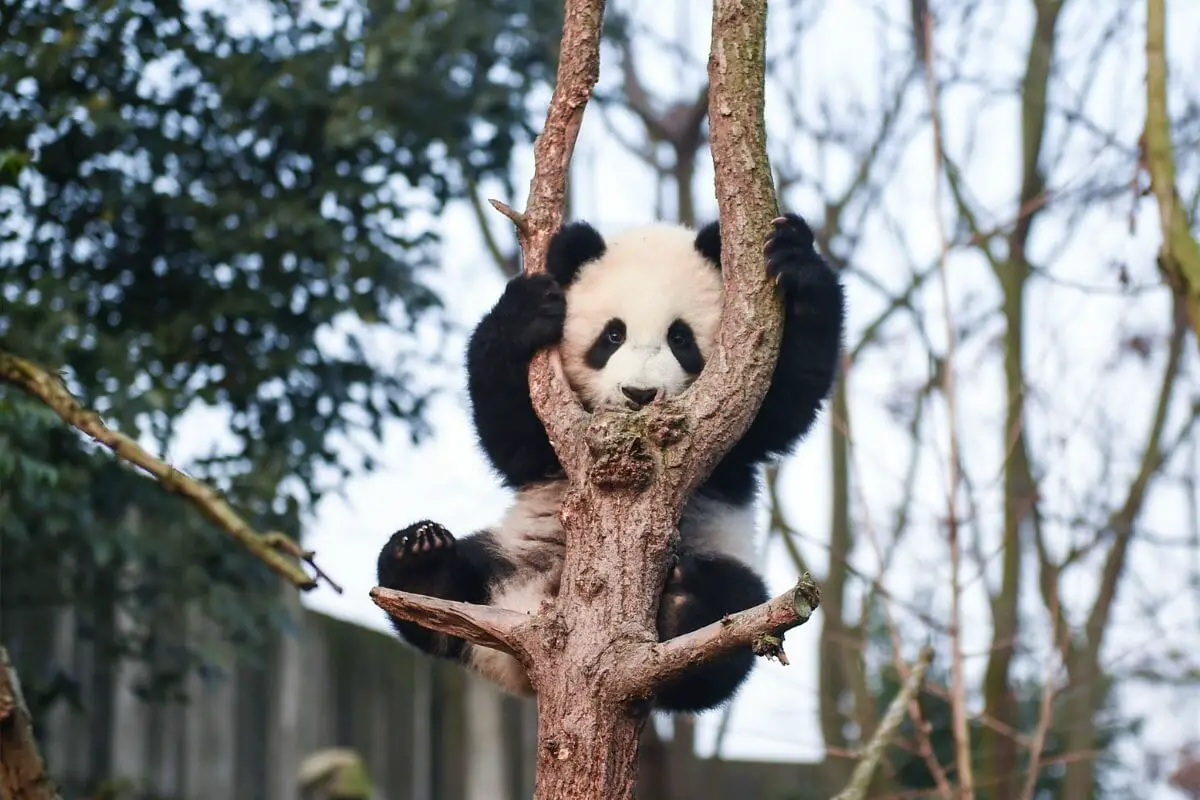
Pandas are mammals that you can find in China. They are herbivores that primarily eat bamboo, including the shoots, stems, and leaves.
Pandas need to eat 12-38kg of bamboo every day for their energy needs to be met because bamboo provides little in terms of nutritional value.
Pandas climb trees to sleep, and they can often be found napping next to their source of food. They are amazing climbers, getting up tree trunks and jumping from branch to branch with ease.
Red-Eye Tree Frog
Red-eye tree frogs are amphibians, meaning they live both in the sea and on land. However, red-eye tree frogs are also arboreal, meaning they spend a lot of time in the trees.
Red-eye tree frogs have the ability to jump great distances, which is very helpful for both escaping predators and catching prey.
Red-eye tree frogs are carnivores, and their diet mostly consists of fruit flies, hornworms, silkworms, crickets, and more.
They can be found in Mexico and throughout Central America.
Puma
Pumas are mammals that can be found in both North and South America, in countries such as Chile and Argentina, often navigating through forested areas.
Pumas are also called panthers, mountain lions, and cougars.
They are carrots that primarily eat hoofed animals, such as deer. However, their diet also consists of animals like rabbits, raccoons, armadillos, mice, and more.
Pumas are excellent at climbing trees thanks to their claws.
Pumas have very strong claes and use them to grip into the tree bark. They climb trees to escape predators such as bears and jaguars.
Racoon
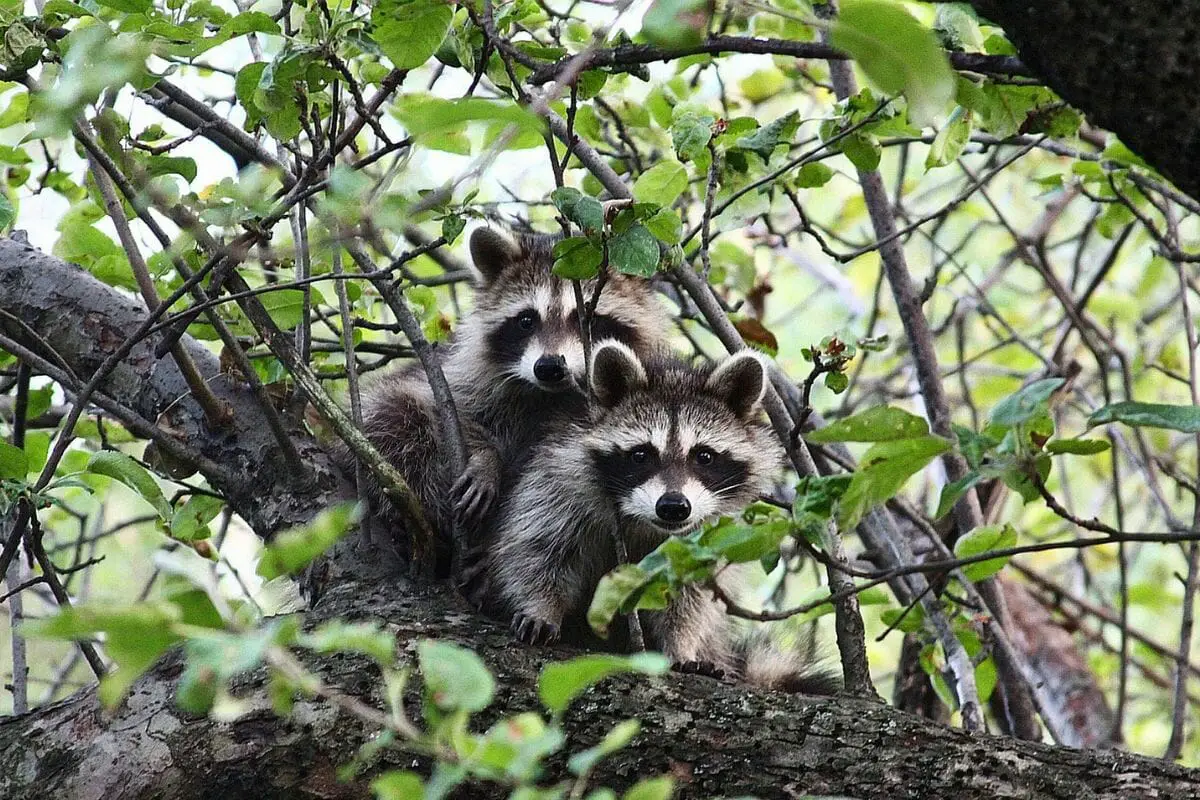
Racoons are omnivorous animals that you can find in both Central and North America. They primarily eat birds, insects, and eggs and will climb trees to hunt for them.
However, they will also use the trees as hiding places from creatures who want to hunt them, such as owls.
Not only that, but mother raccoons will carry their children up to high branches when they spot a predator in order to keep them safe.
Hissing Cockroach
The hissing cockroach is a type of insect that comes from the island of Madagascar.
They are omnivores that primarily eat bananas, oak leaves, romaine lettuce, orange slices, and many vegetables.
Hissing cockroaches will often climb trees in search of food. They like to forage for their meals without being seen, so they are nocturnal creatures who climb in darkness.
Hissing cockroaches have pads on their feet that permit them to climb the majority of surfaces, including trees.
Hercules Beetle
The Hercules beetle is an insect that can be found in southern Mexico.
They are herbivores that primarily feed on rotting wood. Adult Hercules beetles will also feed on fruit (both fresh and rotting) and tree sap, supporting their energy needs for climbing.
As you may have guessed by their name, Hercules beetles are very strong insects, and this is the reason they are able to climb trees.
Not only that, but they have advantageous big claws and large size, so they are able to easily keep hold of a tree while they are climbing it.
In fact, it is said that the Hercules beetle is one of the best climbers worldwide!
Hercules beetles not only climb trees, but they will fight other Hercules beetles on the tree branches!
Male Hercules beetles will fight with each other in order to mate with female Hercules beetles.
Squirrels
Squirrels are highly agile climbers, equipped with sharp claws and strong hind legs that enable them to easily scale tree trunks and branches.
Their bushy tails play a crucial role in maintaining balance as they leap between branches. In addition to foraging for food, such as nuts and seeds, squirrels use their climbing abilities to evade predators.
Their keen spatial awareness and quick reflexes make them proficient at navigating complex tree environments.
Primates
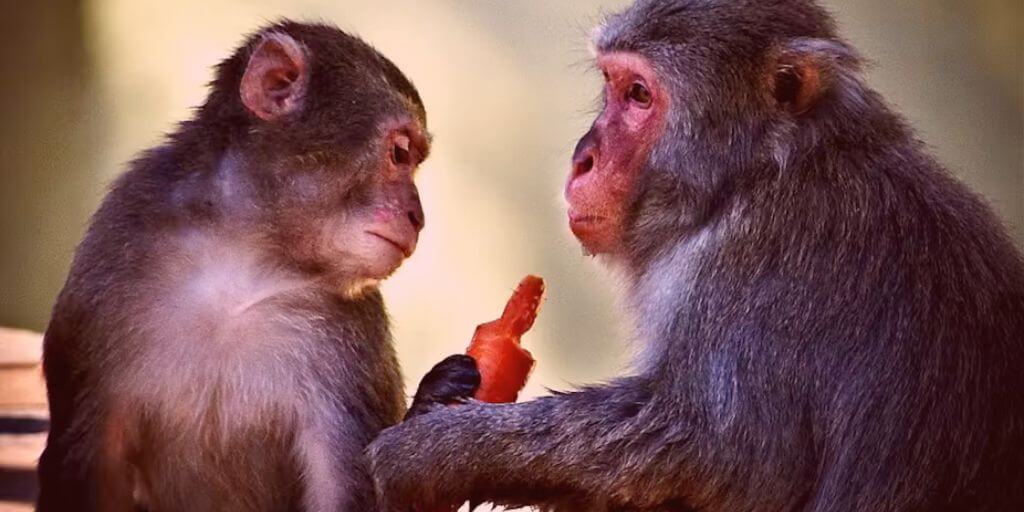
Primates, including monkeys and apes, are well known for their advanced climbing skills, allowing them to move gracefully from tree to tree. Many primate species possess opposable thumbs and prehensile tails, which help them grip and maneuver through trees effectively.
These physical traits, combined with their intelligence, allow primates to access food sources like fruits and leaves while also enabling them to avoid predators.
Tree climbing also plays a significant role in social interactions within primate groups.
Sloths
Sloths are slow-moving mammals that are adapted to spend most of their time in trees. They have long, curved claws that allow them to hang from branches with minimal effort.
Despite their slow movement, sloths are well-suited to arboreal life, using deliberate movements to conserve energy. Their fur often hosts algae, helping them blend into their surroundings.
Sloths primarily feed on leaves, which are plentiful in their tree-dwelling habitats, and their slow metabolism aligns with their low-energy diet.
Leopards
Leopards are among the few big cats known for their exceptional tree-climbing abilities. Their muscular limbs and retractable claws make it easy for them to climb trees, where they often drag their prey to avoid scavengers.
Leopards also use trees as strategic vantage points for hunting and as secure places to rest. Their spotted coats provide camouflage in the branches, enhancing their ability to ambush prey and evade threats.
Final Thoughts
There are many different types of animals that like to climb trees in different ways, and they do so for various reasons.
Many creatures out there, such as the panda, like to climb trees to have a place to sleep.
Meanwhile, pumas and dingos will climb trees to hide from predators, and langurs will swing upside down from the branches in order to be difficult for predators to catch.
There are even creatures such as chimpanzees who climb trees to obtain food!
We hope this article taught you all you need to know about animals that climb trees!
FAQs
What animal is the best tree climber?
Among the best tree climbers, monkeys, baboons, and geckos stand out for their unique adaptations. Monkeys and baboons utilize their grasping hands and feet, while geckos can climb even upside down thanks to microscopic hairs on their feet. Alpine ibex also impress with their ability to scale almost vertical surfaces with specialized hooves.
Which of these creatures can climb trees?
The top tree climbers include monkeys, baboons, geckos, and alpine ibex. Monkeys and baboons excel with their agile limbs and sometimes prehensile tails, making them adept at maneuvering through branches. Geckos use tiny hairs on their feet to adhere to surfaces vertically, and alpine ibex are remarkable for their ability to navigate steep terrains, including trees.
Why do animals climb trees?
Animals climb trees for a variety of survival-related reasons. Predatory species like big cats use trees to scout for prey from a vantage point. Many animals, such as squirrels and certain birds, seek refuge in trees to avoid ground-based predators. Additionally, trees provide a secure spot for resting and storing food, essential for survival in the wild.
- What Should I Do If A Koala Bites Me? Safety Guide - 2024-05-30
- Are Kangaroos Born Without Hind Legs? A Fascinating Journey - 2024-05-30
- Animals That Look Like Squirrels - 2024-05-30

